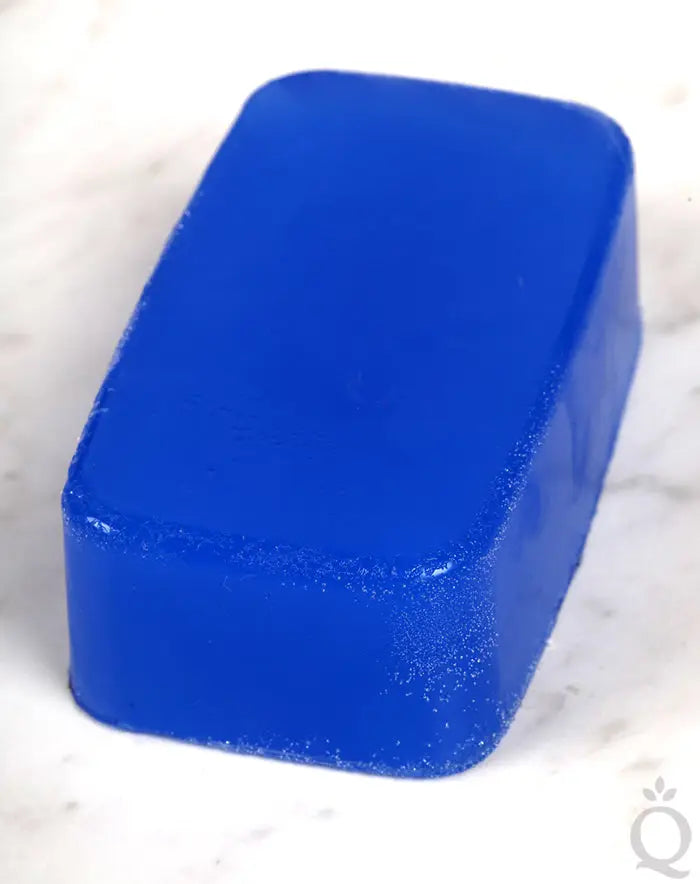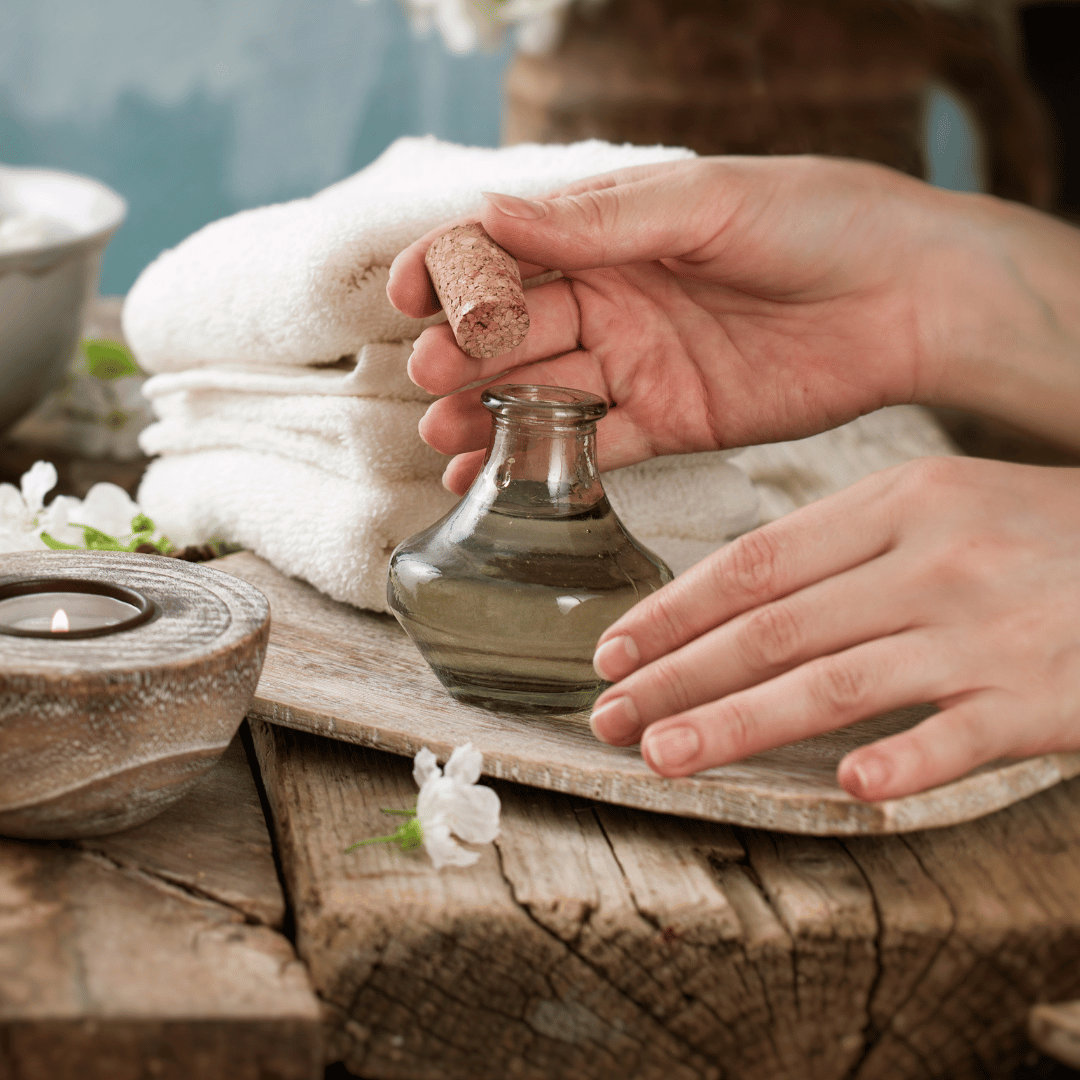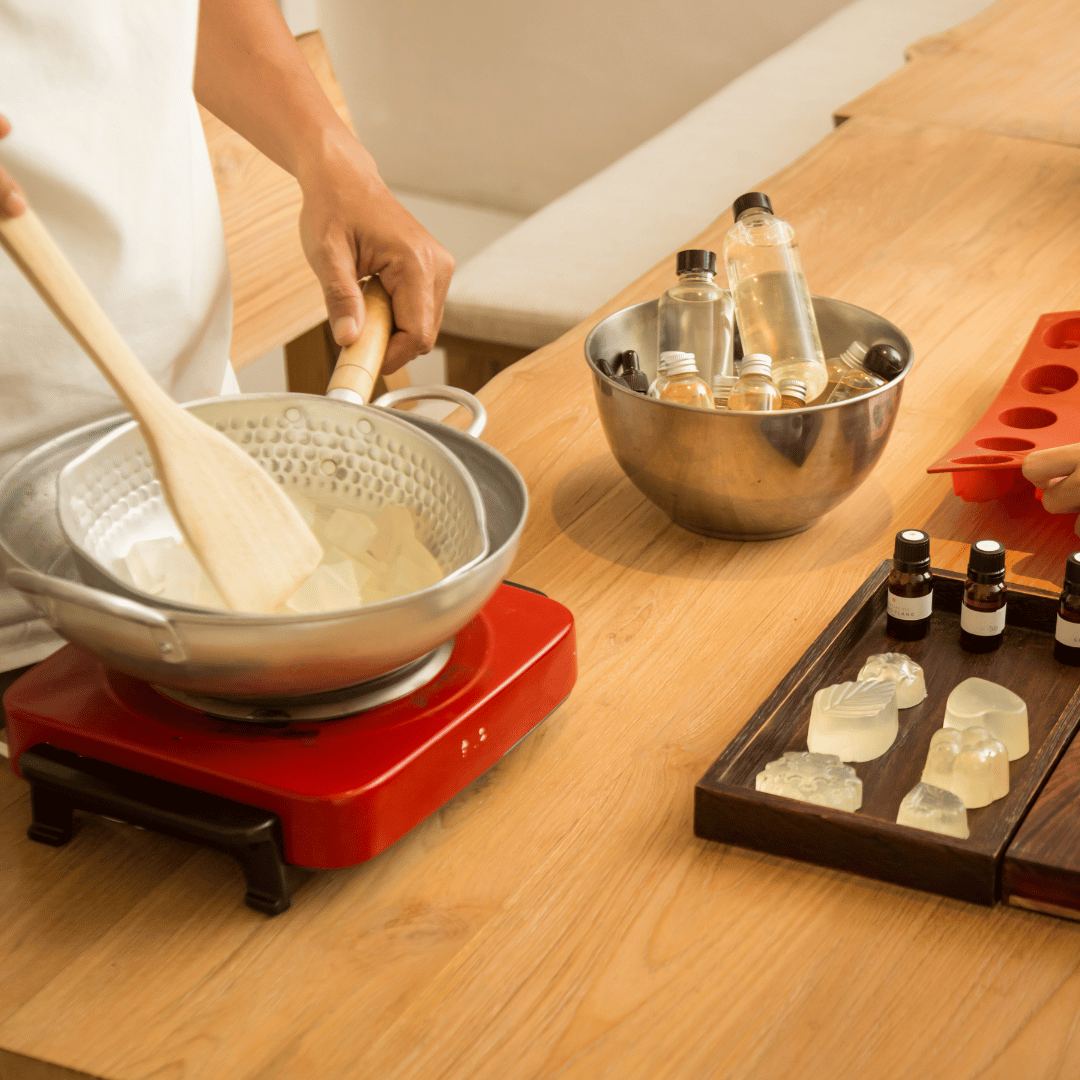Are there beads of liquid on your melt and pour soap, or do the bars look powdery? Are they slippery and wet to the touch? This is a common reaction referred to as “sweating” or “glycerin dew.”

Glycerin dew has formed around the corners of this bar.
Melt and pour soap has extra glycerin added during the manufacturing process. It makes the soap easy to work with and also acts as a humectant. When you wash with melt and pour soap, a thin layer of glycerin is left behind. That draws moisture from the air onto your skin.
As melt and pour soap sits on the counter, glycerin draws moisture onto the bars and forms glycerin dew. It’s more common in humid climates.
The good news is that it’s easy to prevent with the following tips.
- The Purenso No Sweat bases have less glycerin, which means there’s little to no sweating. They’re a good option for extremely humid climates. We also recommend the No Sweat bases if you’re embedding melt and pour in cold process soap because they don’t morph or sweat as the bars cure.
- Let the soap harden and cool at room temperature. If it’s placed in the fridge or freezer for long periods of time it’s more likely to sweat.
- Wrap the bars tightly with plastic wrap and use a heat gun to shrink it on tightly.
- Run a fan over the soap once it’s out of the mould. This is a good option for moderately humid climates but likely won’t work for extremely humid climates.
- Buy a dehumidifier and use it in your soaping space. It’s a good investment because it creates a dry environment for other products like cold process soap and bath bombs.
- You can also place the wrapped bars in an airtight container with rice or silica packets.


